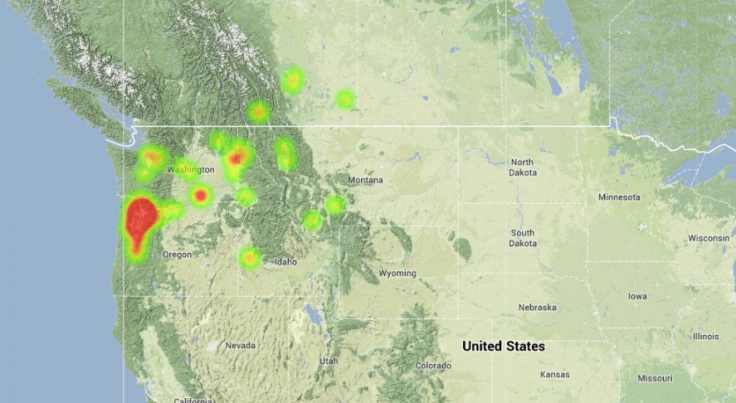‘Major’ Fireball Spotted In Pacific Northwest, More Than 200 Sightings Reported

A giant fireball was spotted in the Pacific Northwest Wednesday, sparking more than 200 reports from observers.
The American Meteor Society received at least 234 reports of a “major fireball event” over the Pacific Northwest and southwestern Canada around 6 a.m. PDT. Many reports came from Oregon, as well as Washington, British Columbia, Alberta, Idaho and Montana.
“A fireball is another term for a very bright meteor, generally brighter than magnitude -4, which is about the same magnitude of the planet Venus in the morning or evening sky,” Jim Todd from the Oregon Museum of Science and Industry told the Oregon Coast.
AMS experts say the meteor entered Earth’s atmosphere over Washington and traveled east to west, landing in the Pacific Ocean, Fox 12 reports.
Individuals that saw the fireball describe the event as something extraordinary.
“It was just amazing to see .... it seemed to come out of nowhere as we were gazing out the window at the starts and suddenly it was streaking across the sky so BIG and long tail .... gorgeous!” Charlotte V. of Wilsonville, Ore., wrote on the AMS website.
“The event was very similar in appearance to a typical shooting star incident, however it was much larger, brighter, & seemed much, much closer to earth,” an observer from Beaverton, Ore., wrote. “The fireball portion was about the same size as the full moon on a low horizon during autumn. The tail was quite broad & lengthy, but the main ball of light shot sparkling bursts in all directions: front, rear, top, bottom.”
Fireballs are a common occurrence in the Earth’s atmosphere, Todd explains, where several thousand take place each day, mostly over oceans and remote regions hidden in daylight.
Earlier this month, a fireball was spotted in Washington, D.C., Pennsylvania, Maryland, Virginia and New Jersey. The event, which took place on Oct. 15, prompted more than 70 AMS reports by witnesses, Patch reports.
“It lasted a very short time & was going quickly in a downward direction. I didn't hear anything or see anything explode. It just came and went very quickly,” an observer from Center Valley, Pa., wrote.
Most meteors are the size of tiny pebbles, but ones the size of a softball can produce light comparable to the full moon, according to the AMS.
“The reason for this is the extreme velocity at which these objects strike the atmosphere. Even the slowest meteors are still traveling at 10 miles per second, which is much faster than a speeding bullet. Fireballs occur every day over all parts of the Earth,” the organization explains.
© Copyright IBTimes 2024. All rights reserved.





















